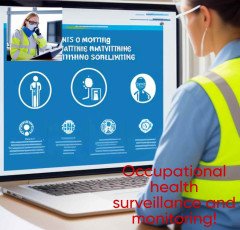
Occupational Health Surveillance And Monitoring

Processes like occupational health surveillance and monitoring are used to keep tabs on and evaluate the health and wellbeing of employees at work.
These procedures entail the methodical gathering, examination, and interpretation of information on workplace dangers, employee exposures, and health effects.
By keeping an eye out for health issues in workers and evaluating the success of workplace health and safety measures, occupational health surveillance and monitoring aims to identify and prevent occupational diseases and injuries. Additionally, it can be used to determine potential health risks at work and assess how well preventive measures are working.
Biological monitoring programs that track exposure to dangerous chemicals or substances in the workplace, medical surveillance programs that monitor employees' health through routine physicals, and ergonomic assessments that assess the physical demands of work tasks are a few examples of occupational health surveillance and monitoring.
Maintaining employee health and safety at work, encouraging early diagnosis and treatment of health issues, and assisting in the prevention of occupational diseases and accidents are all made possible by occupational health surveillance and monitoring.
Other types of occupational health surveillance and monitoring, in addition to the examples given, include:
Monitoring worker behavior includes keeping an eye on things like compliance with safety regulations and the usage of personal protective equipment. To better avoid diseases and injuries at work, it is important to pinpoint areas where behavior can be changed.
Monitoring the psychological and emotional health of employees, including their levels of stress and job satisfaction, is known as psychosocial monitoring. The objective is to pinpoint areas where employee wellbeing can be enhanced in order to reduce the risk of accidents and illnesses at work.
A thorough workplace health and safety program must include essential elements such as occupational health surveillance and monitoring.
Employers may make their workplaces safer and healthier for their workers by detecting possible dangers, monitoring employee health, and assessing the efficacy of control measures.
The collection and analysis of data for occupational health surveillance and monitoring may also require the use of various techniques and instruments.
Medical surveillance, for instance, can entail physical examinations, lab testing, and medical histories. Dosimeters or air samplers may be used during environmental monitoring to evaluate exposure to dangerous compounds.
In order to better workplace health and safety, patterns and trends in the data gathered through occupational health surveillance and monitoring are studied. For instance, steps can be done to lessen or completely avoid exposure to a chemical if data show that workers who are exposed to it have respiratory issues. Similar to this, ergonomic assessments can be performed to determine measures to lower the risk of harm if data reveals that workers who undertake particular occupations are experiencing musculoskeletal diseases.
Employers, employees, and occupational health specialists must all be committed to and involved in the continual process of occupational health surveillance and monitoring. It is a crucial part of an all-encompassing workplace health and safety program that strives to safeguard employees' health and wellbeing and avoid occupational diseases and accidents.
To guarantee the safety and health of their employees, employers must put in place occupational health surveillance and monitoring procedures.
For employees to take part in the programs and to report any concerns about their health or safety at work, this includes offering them training and support. Employers must also guarantee that their programs adhere to regional laws and norms.
Employees are essential to occupational health surveillance and monitoring.
They are in charge of observing safety regulations at work and informing their employer of any risks or worries regarding their health or safety. To maintain their health and wellbeing at work, employees should also take part in monitoring programs such as medical surveillance.
Conducting occupational health surveillance and monitoring requires the assistance of occupational health specialists, such as doctors, nurses, and industrial hygienists. They are qualified to conduct medical surveillance tests, review and interpret data, and make suggestions for reducing workplace dangers.
In conclusion, an extensive workplace health and safety program must include occupational health surveillance and monitoring. They entail the methodical gathering, analysis, and interpretation of data on working conditions, employee exposures, and health effects. Employers may make their workplaces safer and healthier for their workers by detecting possible dangers, monitoring employee health, and assessing the efficacy of control measures.
To further secure the continuous safety and health of employees, it's crucial to remember that occupational health surveillance and monitoring should be carried out on a regular basis. Based on the type of workplace risks, the level of exposure, and the potential health impacts, the frequency and scope of surveillance and monitoring should be determined.
Workplace health surveillance and monitoring can be advantageous to both companies and employees in addition to detecting and avoiding workplace diseases and injuries. For instance, it can raise employee morale and productivity by lowering turnover and absenteeism caused by occupational health issues. Additionally, it can lower the expenses of workers' compensation claims and missed productivity that are related to sickness and injuries at work.
It's crucial to understand that maintaining occupational health surveillance and monitoring is everyone's responsibility, not just the employers. Both employees and employers can benefit from creating a safe and healthy work environment by cooperating to detect and control workplace dangers.
A thorough workplace health and safety program must include occupational health surveillance and monitoring.
To identify potential risks and prevent occupational illnesses and injuries, they entail the methodical gathering, analysis, and interpretation of data on workplace hazards, worker exposures, and health outcomes. Employers can create a safe and healthy work environment that is advantageous to both the company and the employees by implementing these initiatives.
Noting that there is no one-size-fits-all strategy for occupational health surveillance and monitoring.
According to the individual dangers and hazards associated with the workplace and the job duties involved, the methods and equipment used for surveillance and monitoring should be customized.
For instance, employees in a manufacturing facility may need routine medical examinations and chemical exposure monitoring, but employees in an office setting may need ergonomic evaluations and psychosocial monitoring to address stress and musculoskeletal diseases.
In addition, new strategies for occupational health surveillance and monitoring, like wearable technologies and real-time monitoring systems, have emerged as a result of technological advancements. Employers and occupational health experts can respond more rapidly to possible dangers and avoid occupational diseases and injuries with the use of these instruments, which can give more precise and timely data on worker exposures and health outcomes.
A thorough workplace health and safety program must include occupational health surveillance and monitoring.
They support the creation of a safe and healthy workplace by assisting in the identification and management of potential hazards. Employers, staff members, and occupational health specialists can collaborate to develop a culture of safety and enhance employees' health and wellbeing.
Yes, that is accurate. All stakeholders must be dedicated to sustaining an efficient occupational health surveillance and monitoring program, which calls for constant cooperation. This involves the promotion of workplace health and safety by employers, workers, occupational health specialists, government agencies, and other groups.
The program needs to be examined and revised frequently to guarantee its efficacy in reducing workplace dangers.
To do this, it may be necessary to examine and analyze data on worker exposures and health outcomes, evaluate the efficacy of control measures, and spot areas for improvement.
A comprehensive workplace health and safety program should include occupational health surveillance and monitoring along with other elements like hazard identification and assessment, control measures, training and education, and incident investigation and reporting.
Employers can foster a culture of safety that promotes employee health and well-being, lowers the risk of occupational diseases and injuries, and increases overall productivity by adopting a complete and integrated approach to workplace health and safety.
A safe and healthy workplace for all employees, a comprehensive and integrated approach to workplace health and safety is essential.
To identify and regulate workplace dangers and prevent occupational illnesses and injuries, this entails putting in place a variety of tactics and initiatives, such as occupational health surveillance and monitoring.
There are other significant reasons to prioritize occupational health surveillance and monitoring in addition to the advantages already mentioned, such as increased worker productivity and morale and decreased expenditures related to workplace illnesses and injuries. For instance, it can assist employers in adhering to legal requirements and avoiding possible penalties or legal action. Additionally, it can enhance the company's reputation and draw in and keep bright workers who value a secure work environment.
Yes, and it's important to remember that occupational health surveillance and monitoring can help society as a whole as well as particular organizations. We can enhance public health outcomes and lessen the strain on healthcare systems by reducing the prevalence of occupational diseases and injuries. Additionally, insurers, employers, and employees can all save money by avoiding occupational accidents and illnesses.
Social and economic inequality are frequently linked to job dangers, occupational diseases, and occupational injuries.
By identifying high-risk populations and offering focused treatments and resources to reduce the hazards, occupational health surveillance and monitoring can assist detect and address these inequities.
The promotion of workplace health and safety, enhancement of employee productivity and morale, reduction of expenses related to workplace injuries and illnesses, and advancement of social and economic equality all depend on the implementation and maintenance of efficient occupational health surveillance and monitoring systems. Employers may foster a healthy and effective work environment that is advantageous to both people and society at large by putting workers' health and safety first.
That is a fantastic summary, yes. It's also crucial to keep in mind that occupational health surveillance and monitoring is a continuous process that needs the commitment and cooperation of all parties involved. It's not a task to be completed once, nor is it a box to cross off a list.
It's critical to continuously assess and update occupational health surveillance and monitoring systems in light of changes to the workplace, technological advancements, and new information concerning occupational hazards and health consequences in order to ensure their continued efficacy.
Additionally, to make sure that every employee is informed about the program, comprehends its significance, and is aware of its goals. In order to develop a culture of safety and ensure the program's success, it is important to offer training and education on workplace health and safety as well as to encourage employee engagement.
That is indeed completely correct. It's also vital to note that monitoring and surveillance of occupational health might be particularly crucial in high-risk industries like manufacturing, mining, and construction. Workers in these fields may be subjected to a variety of dangers, such as chemicals, noise, vibration, and physical strain. Employers can assist in preventing occupational diseases and injuries by putting in place efficient occupational health surveillance and monitoring programs.
Workers in many industries, including office workers, healthcare workers, and those in the service sector, can benefit from occupational health surveillance and monitoring. Office workers, for instance, may be susceptible to musculoskeletal problems and eye strain, whereas healthcare workers may be vulnerable to infectious infections and needlestick accidents.
All employees have the right to a safe and healthy workplace, regardless of the sector or type of workplace.
.Employers can help to ensure that their employees are protected from workplace dangers and are able to complete their duties safely and effectively by giving priority to occupational health surveillance and monitoring.
For businesses to understand that safeguarding the health and safety of their employees plays a crucial role in the success and long-term viability of their business in addition to being a legal and moral obligation.
Employers can prevent workplace accidents and illnesses, lower healthcare expenses and lost productivity, boost employee happiness, and increase employee retention by investing in occupational health surveillance and monitoring. Employers may also improve their reputation and draw top talent by fostering a culture of safety and displaying their dedication to the wellbeing of their employees.
Any thorough workplace health and safety policy must include occupational health surveillance and monitoring. Employers may safeguard their employees' health and well-being as well as the success and sustainability of their business by recognizing and preventing workplace dangers and fostering a safe and healthy work environment.
That is indeed completely correct. It's important to note that monitoring and surveillance of occupational health can also assist organizations in adhering to legal and regulatory obligations and avoiding any penalties or legal action. Employers are obligated by law to maintain a safe and healthy workplace for their employees in many nations, including the United States.
Implementing a successful occupational health surveillance and monitoring program can show a company's commitment to sustainability and social responsibility in addition to legal compliance. This can help the business build its reputation and brand image, attract and keep customers that appreciate ethical business conduct, and more.
Organizations are under increasing pressure to make sure that their supply chains and business activities comply with social and environmental norms as the globe becomes more linked. A company's dedication to these standards can be demonstrated by the implementation of an efficient occupational health surveillance and monitoring program, which can also enhance their overall sustainability performance.
A complete workplace health and safety program must include occupational health surveillance and monitoring.
Employers can safeguard the health and well-being of their workforce, improve their reputation and brand image, and support the success and sustainability of their business by identifying and controlling workplace hazards, fostering a safe and healthy work environment, and showing a commitment to social responsibility and sustainability.
Yes, and it's important to remember that governments and other stakeholders are also accountable for occupational health surveillance and monitoring, in addition to employers. Governments may play a significant role in establishing and enforcing occupational health and safety regulations as well as in giving employers the tools and assistance they need to put in place successful programs.
By advocating for better working conditions, offering training and education on workplace hazards and health effects, and working with employers and governments to create efficient occupational health surveillance and monitoring programs, trade unions and worker organizations can also play a significant role in promoting worker health and safety.
In order to establish and maintain occupational health surveillance and monitoring programs, health professionals, particularly occupational health physicians and nurses, can offer invaluable experience and support. These specialists can aid in the identification of workplace dangers, the evaluation of the health risks to employees, and the development of treatments and strategies to reduce or eliminate these dangers.
Employers, governments, trade unions, worker organizations, and health professionals must all work together to provide effective occupational health surveillance and monitoring. We can safeguard the health and well-being of employees and advance a more just and sustainable society by cooperating to identify, reduce, and regulate workplace dangers and to foster a safe and healthy work environment.
The understanding that encouraging worker well-being and quality of life is equally as important as ensuring compliance with laws and regulations or reducing workplace accidents and diseases.
Occupational health surveillance and monitoring can cover mental health and well-being in the workplace in addition to physical health risks.
This may entail recognizing and resolving workplace pressures, encouraging work-life balance, and facilitating access to tools and assistance for mental health.
Monitoring and surveillance of occupational health can support broader public health objectives including lowering the prevalence of chronic diseases and promoting healthy lifestyles. Occupational health surveillance and monitoring can assist in preventing chronic diseases and enhancing general population health by identifying workplace health risks and fostering healthy habits and surroundings.
A multidimensional strategy, occupational health surveillance and monitoring takes into account not only risks to physical health but also those to mental health and wellbeing as well as larger public health objectives. Occupational health surveillance and monitoring can help to a more sustainable and fair society by enhancing worker well-being and general population health. Should understand that maintaining surveillance and monitoring of occupational health is a continuous activity that calls for regular review and improvement.
The occupational health surveillance and monitoring program should be evaluated on a regular basis to assist identify areas that require improvement and to make sure the program is still effective and pertinent. This may entail going over incident and injury data, looking at patterns and trends, and getting input from stakeholders and employees.
As part of the program's continual improvement, new approaches and treatments can be used to address recognized health hazards, policies and practices can be updated in accordance with industry best practices and fresh research, and managers and employees can receive ongoing training.
Furthermore, it's critical to understand that occupational health surveillance and monitoring should be incorporated into the organization's overall business plan. Setting goals and objectives for worker health and safety, committing employees and resources to the program, and routinely updating stakeholders and participants on the program's status and results can all be part of this.
The continual practice of occupational health surveillance and monitoring necessitates regular evaluation and continuous improvement.
Employers may make sure they are safeguarding the health and well-being of their workforces and promoting a more just and sustainable society by incorporating occupational health surveillance and monitoring into the organization's overall business strategy.
To be aware that, in addition to its social and ethical benefits, occupational health surveillance and monitoring can be advantageous to employers economically.
The costs associated with workplace accidents, diseases, and absenteeism can be decreased with effective occupational health surveillance and monitoring. Employers can decrease the frequency of workplace injuries and illnesses, as well as the related expenses of medical treatment, workers' compensation, and lost productivity, by identifying and managing workplace health concerns.
Encouraging a safe and healthy work environment can improve productivity and performance, save turnover and training expenses, and attract and keep qualified people. Workers are more likely to be engaged and motivated when they feel safe and supported at work, which results in higher levels of output and quality.
Employers can comply with regulations and avert potential fines and legal action by implementing a strong occupational health surveillance and monitoring program. The organization's reputation and financial stability can both be preserved in this way.
To its social and ethical benefits, effective occupational health surveillance and monitoring can benefit businesses financially.
Employers can lower the cost of workplace accidents and illnesses, improve employee performance and productivity, and safeguard the organization's financial stability and reputation by encouraging a safe and healthy work environment.
Yes, and it's also crucial to remember that monitoring and surveillance of occupational health can have positive effects on society outside of the workplace.
For instance, occupational health surveillance and monitoring can assist in reducing the frequency of occupational diseases and injuries, as well as other negative externalities connected to certain businesses, by identifying and resolving workplace health concerns.
Occupational health surveillance and monitoring can lower healthcare expenditures and enhance general population health by improving worker health and well-being. Healthy, productive workers are more likely to support their families and communities and are less likely to need medical care.
Monitoring and surveillance of occupational health can support broader initiatives to encourage sustainability and social responsibility in company activities. Employers can show their dedication to moral and sustainable business practices by placing a high priority on employee health and safety. This can help them draw in and keep investors and customers who care about the environment.
Occupational health surveillance and monitoring can have substantial societal advantages outside of the workplace, such as lowering the prevalence of occupational illnesses and injuries, enhancing population health generally, and encouraging sustainability and social responsibility in business practices. Employers can help create a society that is more sustainable and egalitarian by putting worker health and safety first.

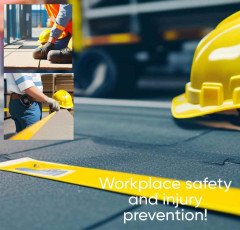
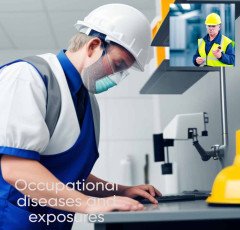










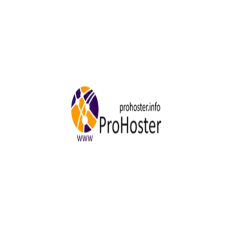

 Kitchen Tap
Kitchen Tap  Crocs
Crocs  NordVPN
NordVPN  Graphics & Design
Graphics & Design  Best Phone
Best Phone  NordLocker
NordLocker  HP Laptop
HP Laptop  RPM 3.0
RPM 3.0  Essentials for Gamers
Essentials for Gamers  Artificial Intelligence
Artificial Intelligence  Wireless Bluetooth Earphones
Wireless Bluetooth Earphones  Wall Lamp
Wall Lamp  Prime Video
Prime Video  Echo Dot - Smart speaker with Alexa
Echo Dot - Smart speaker with Alexa  ELECTRONIC ACCESSORIES
ELECTRONIC ACCESSORIES  Smart Doorbell
Smart Doorbell  Hanging Lights For Living Room
Hanging Lights For Living Room  Digital Voice Recorder
Digital Voice Recorder  Acer Laptop
Acer Laptop  Dell Laptop
Dell Laptop  Stylish Sneakers by Red Tape
Stylish Sneakers by Red Tape  Unlimited access to classes on illustration, photography, design, film, music
Unlimited access to classes on illustration, photography, design, film, music  Pet Care Products
Pet Care Products  Door Handle Collection
Door Handle Collection  Best Robotic Vacuum Cleaners
Best Robotic Vacuum Cleaners  Favorite Company (Cuelinks)
Favorite Company (Cuelinks)  Wristbands
Wristbands  Amazon Best Selling Products
Amazon Best Selling Products  Healthy Ingredients
Healthy Ingredients 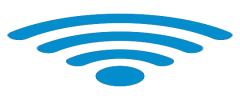 All Wireless Products
All Wireless Products  Hot Bags For Pain Relief
Hot Bags For Pain Relief  Home Decor Items
Home Decor Items 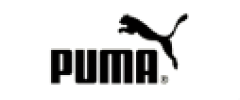 Puma (Clothing & Accessories)
Puma (Clothing & Accessories)  TitTok Revolution
TitTok Revolution  Best Selling Books
Best Selling Books  SOFAS
SOFAS  Smart Watches
Smart Watches  One World Collection
One World Collection  Only For The United States
Only For The United States 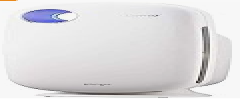 Air Purifier for Home
Air Purifier for Home  Bathroom Mirrors
Bathroom Mirrors  Apple iPhone
Apple iPhone  Online Marketing
Online Marketing  Kitchen Daily Use
Kitchen Daily Use  Adidas Shoes
Adidas Shoes  ASUS Laptop
ASUS Laptop  Best Home Appliances
Best Home Appliances  Duke T Shirts
Duke T Shirts  LCD Writing Tablet
LCD Writing Tablet  SEO Checklist
SEO Checklist  1150+Trendy kids coloring pages Bundle
1150+Trendy kids coloring pages Bundle  Men Clothing
Men Clothing  BEST SELLER TOP10
BEST SELLER TOP10  Online Technology Classes
Online Technology Classes  Samsung Mobile
Samsung Mobile  Sennheiser
Sennheiser  Creative Brief For Video Shoot
Creative Brief For Video Shoot  Best Sellers On Amazon
Best Sellers On Amazon  Dual USB Car Charger
Dual USB Car Charger  The Secret Email System
The Secret Email System  Hello Theme
Hello Theme  Unreal Engine 5 For Beginners Learn The Basics Of Virtual Production
Unreal Engine 5 For Beginners Learn The Basics Of Virtual Production  Realme Smart Phone
Realme Smart Phone  The Click Engine
The Click Engine  Rakhi
Rakhi  Motion Sensor Light
Motion Sensor Light  Wireless Gaming Mouse
Wireless Gaming Mouse 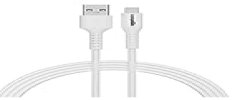 iPhone cable
iPhone cable  Women Fashion
Women Fashion  NordPass
NordPass  4k Projector For Home
4k Projector For Home 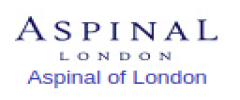 ASPINAL LONDON
ASPINAL LONDON  Top Rated From Amazon
Top Rated From Amazon 


















